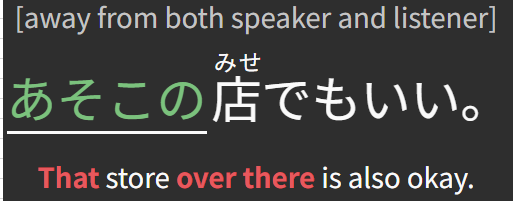A common misconception is that の mostly functions as a possessive particle. In reality, there are many functions of の, which are better explained in this article:
From the above article:
“ ISN’T の THE JAPANESE POSSESSIVE?
You might think of particle の like Japanese equivalent of the possessive 's ending in English, as in Tom’s car of Granny’s kittens. However, the label maker is really a better way to think of particle の, since the relationship between the label and the noun can result in various different interpretations.”
The example in the OP is no exception.
Also, I recommend @Duolingo to learn about こそあど words in Japanese. These are used all the time, so might as well get used to them early on. Here’s a great article about them:
HTH!


